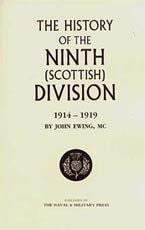Country United Kingdom Type Infantry | Branch British Army Size Division | |
 | ||
Active 21 August 1914 – 16 March 1919 Engagements World War I
Battle of Loos
Battle of the Somme
Capture of Longueval
Battle of Le Transloy
Battle of Arras (1917)
Battle of Passchendaele
Ludendorff Offensive
Battle of Messines
Battle of Bailleul
Battle of Kemmel Ridge
Battle of Scherpenberg
Battle of the Lys Salient
Fourth Battle of Ypres
Battle of Courtrai
Battle of Ooteghem | ||
The 9th (Scottish) Division, was an infantry division of the British Army during World War I, one of the Kitchener's Army divisions raised from volunteers by Lord Kitchener to serve on the Western Front during the First World War.
Contents
After the 1st South African Infantry Brigade Group joined in early 1916, the division was known colloquially as the Jock and Springboks.
Unit history
In the Battle of Loos, notable for being the first battle in which British forces used poison gas, the 9th (Scottish) Division assaulted the Hohenzollern Redoubt, the 5th Camerons suffered horrific casualties, and Corporal James Dalgleish Pollock gained a Victoria Cross for his actions.
The 9th (Scottish) Division took part in major fighting during the Somme offensive. Notably it relieved the 30th Division at Montauban and later attacked German positions at Bernafay Wood, where it succeeded in capturing vital objectives and forcing a German withdrawal. In the Somme offensive, the 9th (Scottish)) Division liberated the village of Longueval, the village now has a statue of a Scottish piper at its crossroads that commemorates this fact and also other pipers who served in World War I.
Formation
The division comprised the following brigades:
The 28th Brigade was broken up in May 1916 and replaced with 28th (South African) Brigade.
Replaced 28th Brigade in May 1916.
General Officers Commanding
Commanders have included:
